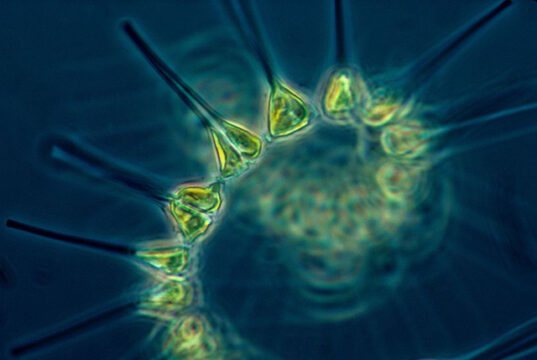Monitor - ISSN 1472-0221
The Newsletter for Data Acquisition and Control
Issue 273 August 2021
Thanks very much for subscribing. You can download a pdf copy of the newsletter here.
Contents
* What are Smart Sensors?
* Your DAQ Questions Answered: Measuring from LVDT and Strain Gauge
* Data Acquisition News Round-Up
What are Smart Sensors?
A smart sensor detects environmental signals, processes them and outputs the resulting information. Some are complete, self-contained systems which include logging and display capabilities. The data acquisition component of the sensor often converts the signal from analogue to digital, conditions the signal, calibrates and compensates before transmitting the resulting information.
The Internet of Things comprises a network of smart sensors. The sensors can communicate with a central gateway or with each other. Each has a unique identifier.
Several sensing elements can be combined in one smart sensor. For example, in the smart city vehicle counters may be integrated with air pollution detectors to provide real-time information about traffic levels and air quality. Similarly, parking spaces can be communicated
In agriculture, smart sensors monitor water content of the soil and deploy irrigation when needed.
Smart sensors are being used to optimise heating grids. In Europe around 20% of heat is lost in the distribution grid. Smart sensors can precisely monitor the grid and provide new, valuable knowledge about the entire system, thus saving district heating plants enormous sums on monitoring, maintenance and heat loss. Very small sensors placed inside the insulation material around the district heating pipes that automatically harvest energy from their surroundings. Consequently, the sensors do not need a battery, as they continuously measure a wide range of different parameters. Data processing takes place directly in the sensor, where artificial intelligence learns to recognise important and real time data in the data stream, only communicating the most important information.
In industry smart sensors trigger maintenance procedures.
Reference and Further Reading
Why you shouldn't use mobile phone signals to count people: Dutch city fined 600000 Euros Retails Sensing, 2021
GDPR & Smartphones
Find out More
For more information get in touch.
Your Data Acquisition Questions Answered: Measuring from LVDT and Strain Gauge
Question
I am preparing some experiments which will use some strain gauges and LVDT. In that case, I would like to know which equipments should try to buy from your company, including the data logger and software. In one experiment, I need to test four stain gauges at one time. If you can highlight the price and the name of the equipment. I would be appreciated for your help!
Answer
You can use the Microlink 751-SG package. This will log up to 16 strain gauge, or voltage input circuits. The LVDT could need to have a DC voltage output which would be sutable as an input to the ML751. You would need to check the type of LVDT you are going to use. We would also need to know the type of strain gauge to be used e..g. 120 ohm or 350 ohm, in quarter, half or full bridge configuration.
The cost of the Microlink 751-SG package is £475
For more details see Microlink 751-SG: Strain Gauge Measurement, Digital I/O and Counters and Understanding Strain Measurement with Strain Gauge Bridges
DAQ News Round-up
Welcome to our round-up of the data acquisition and control news. If you would like to receive more timely DAQ news updates then follow us on Twitter - @DataAcquisition - or grab our rss feed.
Elastic ice could be used to measure pollution
Researchers have developed thin strands of ice that can be bent and curled like wires. The scientists said the tech could eventually be used to create tiny sensors capable of detecting air pollution.
Source: Business Insider
https://www.businessinsider.com/
Bees find refuge from perilous world in robotic hive
Robotic arm scans honeycombs for disease and pesticides; reports in real time any hazards that threaten the colony
Source: Beewise
https://www.ynetnews.com/
Making sensors visible could build civic trust
Most technology projects are deployed with the aim of making life in cities better - cleaner, greener, less congested. Showing sensors will make people trust them more.
Source: Cities Today
https://cities-today.com/
Common Solar Tech can charge sensors with indoor light
Any time you turn on a light at home or in the office, you are expending energy. But what if flipping the light switch meant producing energy too?
Source: NIST
https://www.nist.gov/
Floating robots give new look at ocean health
A fleet of robotic floats could revolutionize our understanding of primary productivity of phytoplankton in the ocean on a global scale.
Source: SCUBA News
https://news.scubatravel.co.uk/

* Copyright Windmill Software Ltd
* Reprinting permitted with this notice included
* For more articles see https://www.windmill.co.uk/
We are happy for you to copy and distribute this
newsletter, and use extracts from it on your own web
site or other publication, providing the above notice
is included and a link back to our website is in place.
For previous issues by subject see https://www.windmill.co.uk/monitorindex.html
SUBSCRIBING OR CANCELLING SUBSCRIPTION Visit https://www.windmill.co.uk/newsletter.html and add or remove your e-mail address.
Windmill Software Ltd, PO Box 58, North District Office,
Manchester, M8 8QR, UK
Telephone: +44 (0)161 834 6688
Facsimile: +44 (0)161 833 2190
E-mail: monitor@windmillsoft.com
https://www.windmill.co.uk/
https://www.windmillsoft.com/